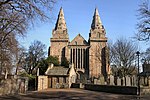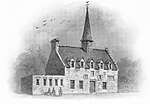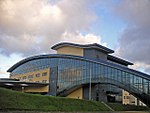Bridge of Don
Areas of AberdeenUse British English from February 2017

Bridge of Don is a suburb in the north of Aberdeen, Scotland. In 2020, the Bridge of Don electoral ward was estimated to have a population of 19,545.Bridge of Don is split into four areas for statistical purposes by Aberdeen City Council and Police Scotland: Balgownie and Donmouth, Danestone, Denmore and Oldmachar. Traditionally Bridge of Don has been split up into: Bridge of Don, Danestone, Denmore and Middleton Park.
Excerpt from the Wikipedia article Bridge of Don (License: CC BY-SA 3.0, Authors, Images).Bridge of Don
Scotstown Road, Aberdeen City Bridge of Don
Geographical coordinates (GPS) Address Phone number Nearby Places Show on map
Geographical coordinates (GPS)
| Latitude | Longitude |
|---|---|
| N 57.1827 ° | E -2.100985 ° |
Address
Clashieknowe
Scotstown Road
AB23 8NA Aberdeen City, Bridge of Don
Scotland, United Kingdom
Open on Google Maps









